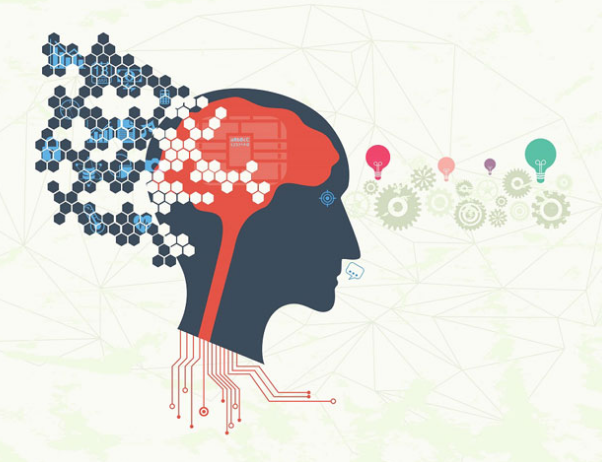
One of the greatest abilities humans have is Language.
But are languages merely tools for expressing our thoughts, or do they actually shape our thoughts?
Based on my experience, after living 10 years abroad, and speaking the language as a component of those cultures, living and interacting with those people, my answer is: yes it does. It can reveal a new way of looking at something. It influences perception.
Learning a new language widens our perspective, deepens our knowledge, and changes the way we perceive the world.
The debate on the influence of language in thought has been going on for years, ever since anthropologist Benjamin Lee Whorf published an article, in 1940, suggesting that our mother tongue restricts what we are able to think.
But because there had never been any actual evidence to support his claims, in the following decades, studies on the influence of language in thought had fallen into disrepute. The topic was pretty much swept under the carpet until, a few years ago, the scientific community finally picked up the pieces of Whorf’s theory and began studying if language really does shape thinking.
The results have been quite surprising. Recent research has in fact revealed that when we learn our mother tongue we acquire certain habits of thought and this shapes our experience in many ways.
More than 7,000 languages are spoken around the world today. And all these languages differ from one another in all kinds of ways; they all have different sounds, vocabularies, and structures.
And questions about their influence on shaping thoughts, touch on nearly all of the major controversies in the study of mind. They have engaged scores of philosophers, anthropologists, linguists, and psychologists, and they have important implications for politics, law, and religion.
For so long, people have treated words as mere labels for objects, and languages as different ways to string words together to convey thoughts, feelings, and concepts. But language is more than that. Because of it, we can exchange complex thoughts and ideas with one another, whether it be spoken aloud or written in ink. It’s also through language that we’re able to trigger emotions, imagination, and action.
“When you’re learning a new language, you’re not simply learning a new way of talking, you are also inadvertently learning a new way of thinking.”
Lera Boroditsky
Language and culture go together
Language isn’t just a way to communicate, it’s a component of culture that makes it unique and specific. When language and culture are discussed, the phrase “language is culture and culture is language” is often mentioned because the two are always intertwined. This means that the language you speak reflects what the values and beliefs of that culture are.
According to anthropological linguist Daniel Everett, language can be considered a cultural tool to relate a community’s values and ideals and is shaped and molded by these residents over time. For example, looking at the many idioms the Chinese culture has on family, you can definitely see how much they value that relationship.
The way we talk and communicate eventually lead to the ways within our culture. For instance, English speakers get to the point in speech quicker than say, a Chinese speaker would, says Betty Birner, a professor of linguistics and cognitive science at Northern Illinois University. In English, someone might say “I want you to come to my house for dinner,” then give the reasons why we need to have dinner together. The Chinese speaker might give all the background information and build up to the punchline. The idea here is that the speaker can say what they want after they’ve explained why they want it.
Society and language are mutually important to each other. To learn a new language, is to prepare oneself to be introduced to a new world apart from your own.

Language changes how we see things
The principle of linguistic relativity, states that the way people think of the world is influenced directly by the language that the people use to talk about it. Or more radically, people could only perceive aspects of the world for which their language has words.
An easier way to explain this is with color perception. The number of terms we have for the colors we see varies from one language to another. For instance, English speakers name different shades of blue as dark blue and light blue. Russian speakers have two distinct categories for blue: it’s either siniy (dark blue) or goluboy (light blue). We do the same thing for another color: dark red and light red — the latter of which we call pink! With this, people who speak two or more languages are expected to focus differently regarding colors because different languages distinguish color in various ways. If they had different words to specifically categorize different shades, their language have a more accurate degree of depth when describing various shades of the color, as opposed to chalking them all down to the same word.
Another example is with time. An English speaker would usually organize time from left to right, but with Arabic speakers, time is laid out from right to left. Different languages also call for different ways of counting. In French, 92 is quatre-vingt douze or “four twenties and twelve”. But for English, 92 is simply ninety-two. Contrast this with Mandarin Chinese, where the relationship between the tens and the units is very clear. Here, 92 is written jiǔ shí èr, which translates as “nine ten two”.
Gender can play a significant role across many languages in cultures as well. In languages such as Portuguese, German, Italian and Spanish, nouns are gendered. This means that there are masculine and feminine words, rather than neutral terms. For instance, in the Italian language, the word beer is “Birra” which is a feminine noun. The Italian word for wine is “vino”, which is a masculine noun.
Research indicates that the way that native speakers describe these objects depends on the gender of the noun. For example, “vino” may be described as strong and full-bodied, which are more masculine words. “Birra” may be described as “light” and “bubbly”, which are more feminine characteristics.
What this means for bilinguals
Given the things we’ve tackled, it’s no surprise that those who speak more than one language see the world differently. Numerous studies have shown that a new language can change how the human mind pulls information together, hence, enabling bilinguals (and even multilinguals) to have more than one perspective on a particular issue. Say, for decision-makers, this may facilitate negotiations and the ability to see both sides of an argument and different points of view.
Even more benefits come from being bilingual such as improved performance, better memory, and increased confidence. This is why multinational companies are looking to employ more bilinguals and also equip their workforce with global language skills they can use in the workplace and upon interacting with customers and clients such as those in healthcare and finance.
In conclusion:
“What we have learned is that people who speak different languages do indeed think differently and that even flukes of grammar can profoundly affect how we see the world. Language is a uniquely human gift, central to our experience of being human. Appreciating its role in constructing our mental lives brings us one step closer to understanding the very nature of humanity“.
Lera Boroditsky
Sources: More Than Words: How Language Affects The Way We Think; How does our language shape the way we think?; Language: The Cultural Tool; How language shapes our perception of reality; Why you might be counting in the wrong language; Does language shape how you think?
